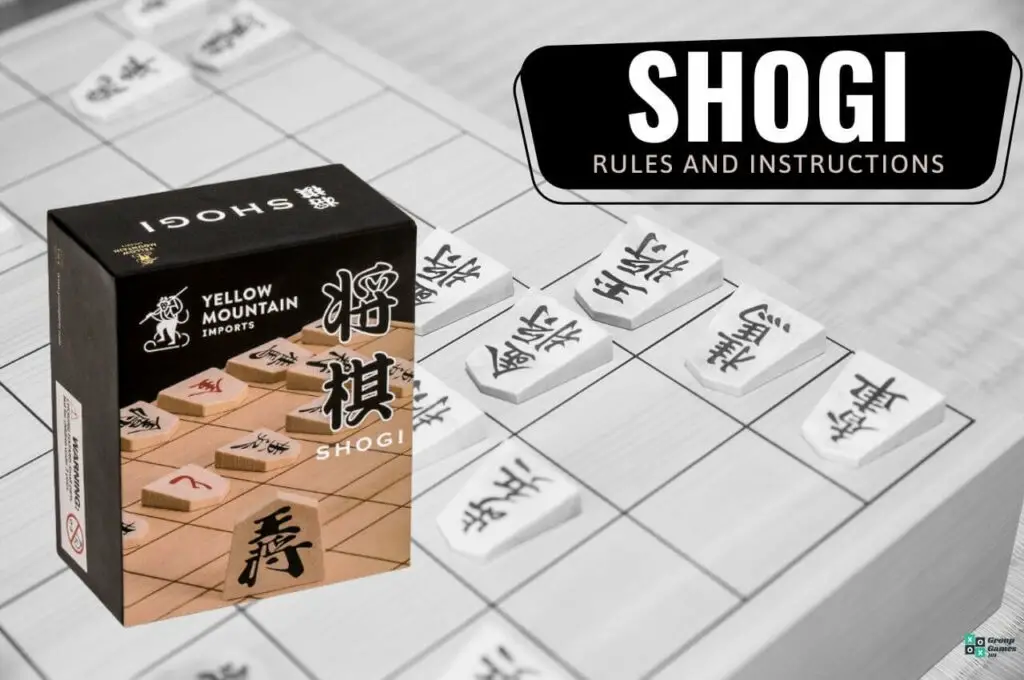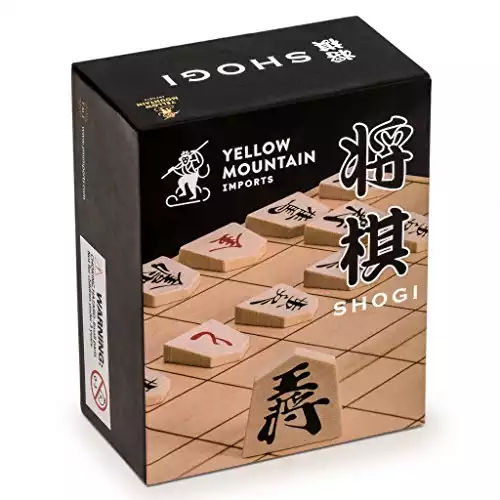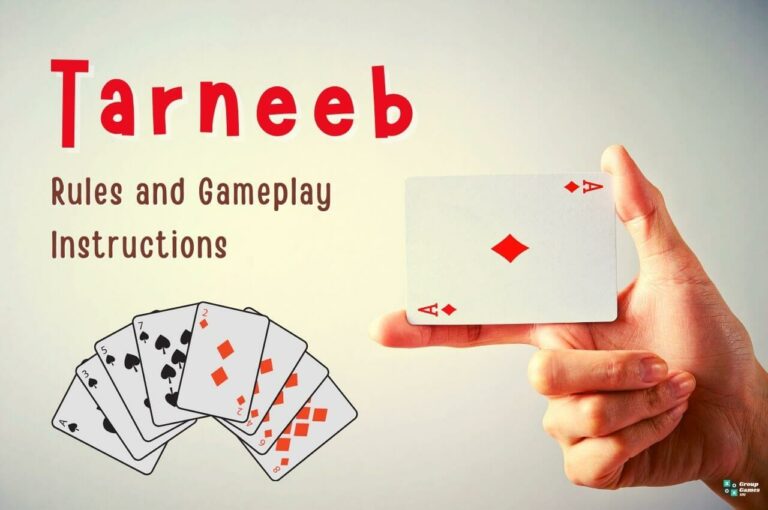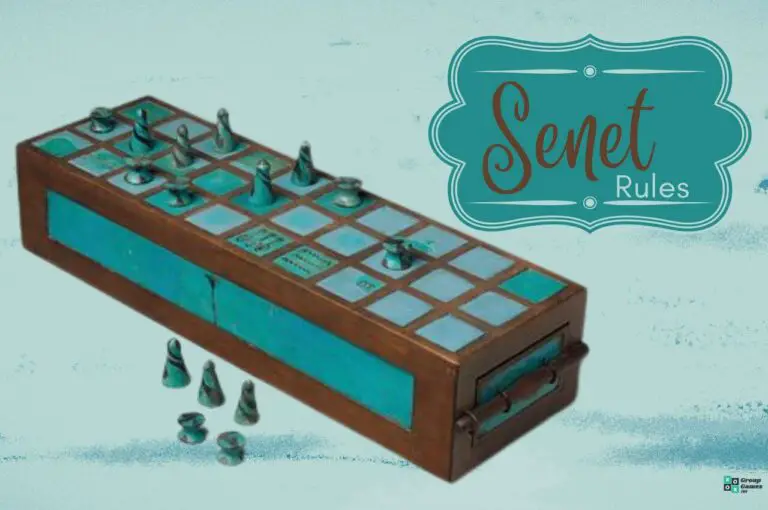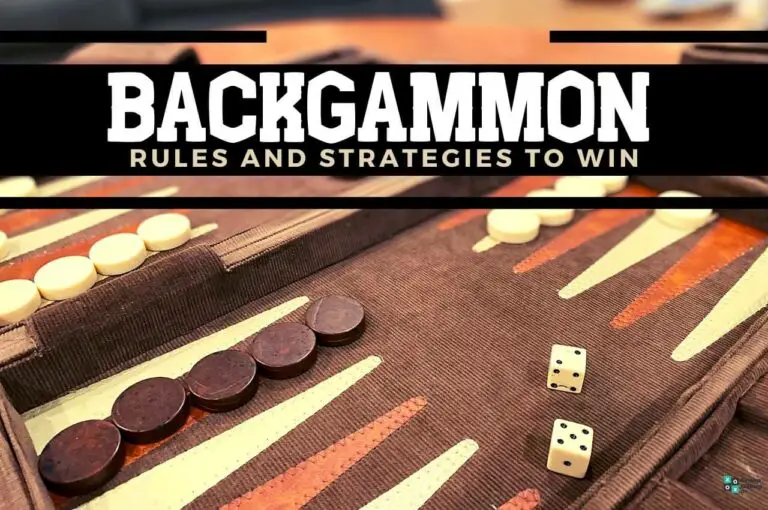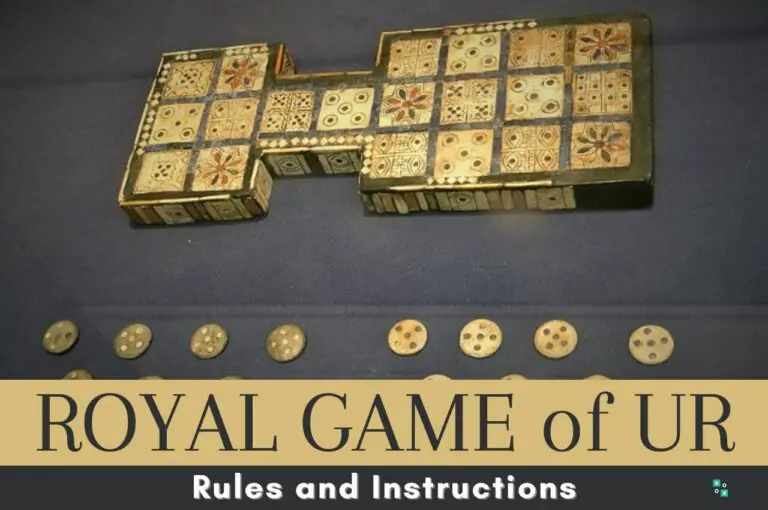The game of Shogi, also referred to as Japanese Chess, is a two-player strategy board game that dates back as early as sixth century Japan. Read on to discover the Shogi rules, gameplay, and more!
Depending on where you live, you may be familiar with the game Shogi, but the gameplay is not identical to that of traditional Chess. So check it out for yourself to explore a unique Japanese-themed game of Chess.
This Shogi rules guide will cover the following:
- What is Shogi?
- A brief history of Shogi
- What you’ll need to play Shogi
- Shogi Rules
- How to play Shogi (Video Tutorial)
- FAQs
Read on to learn how to play Shogi.
What is Shogi?
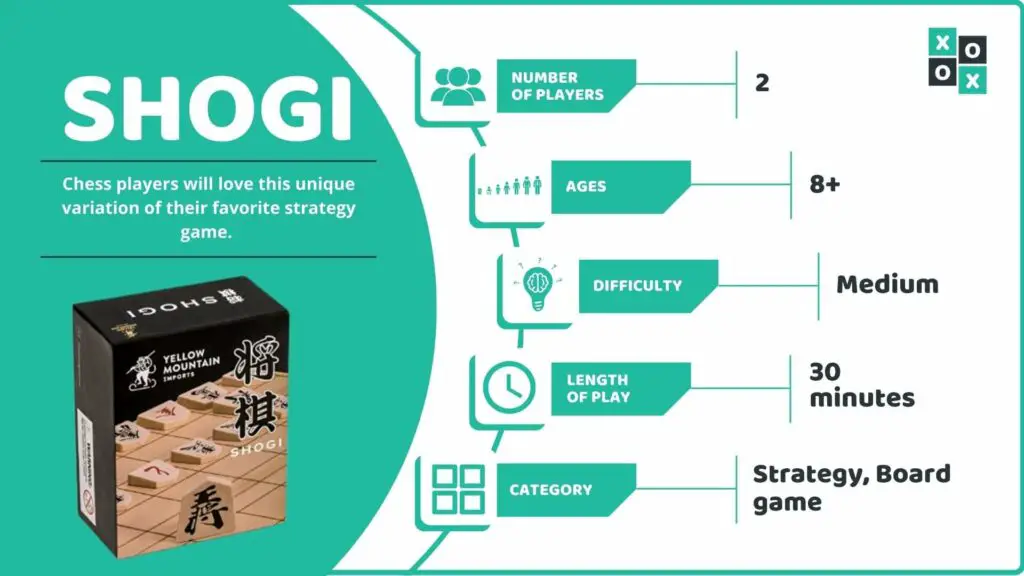
Two-player strategy game, Shogi is the Japanese counterpart to the game of Chess. Players work to move their pieces across a grid-marked board to claim their opponent’s pieces, capture the king, and win the game.
Number of Players: 2
Ages: 8+
Difficulty: Medium
Length of Play: 30 minutes
Category: Strategy, Board game
Similar to: Chess, Xiangqi, Chinese Checkers
Main Objective: Try to capture your opponent’s king to win.
Why We Love It: Chess players will love this unique variation of their favorite strategy game.
A Brief History of Shogi
Among other Chess-like games played in Japan, Shogi is the most commonly played version.
There is no clear origin of Shogi’s development, but historians believe the game could have been developed around sixth-century Japan.
It is thought that this game was derived from Chaturanga, an Indian game that also led to Chess’s developments.
One of the most significant playing rules, dropping, allows captured pieces to be returned to the game. It is thought that this additional option was established around the 16th century and was not part of the original gameplay.
Today, Shogi is still played in tournaments and recreational games in Japan but did not become famous worldwide due to the nature of the Japanese characters identifying each piece.
You can play Shogi online for yourself against another player or on the computer.
What You’ll Need to Play Shogi
Everything you need to play is included in this boxed set.
The complete game box contains:
- Paper game board
- Instruction manual
- 20 pawns
- 2 rooks
- 2 bishops
- 4 lances
- 4 knights
- 4 silver generals
- 4 gold generals
- 2 kings
Area of Play
Set up the game board between both players, placing game pieces with the pointed ends toward your opponent.
The Japanese characters on each tile state the name of the piece. For instance, the Japanese word for king is displayed on the king game pieces, and so on. This makes gameplay tricky for beginners who do not read Japanese.
The game board consists of a 9 x 9 grid comparable to a Chess board. However, the spaces are rectangular in shape.
With the black side of the pieces facing up to begin, place pieces in the following order:
- Pawns: Line up across the third row
- Bishop: On the second row; the second space in from the left
- Rook: On the second row; the second space in from the right
On the last row, place the following pieces from left to right:
Lance, Knight, Silver General, Gold General, King, Gold General, Silver General, Knight, Lance
Pay close attention to your game pieces, as your opponent’s pieces will have a slightly different mark on the image so that you can tell them apart.
Shogi Rules
Decide which player will go first, then each player will alternate playing.
On your turn, move or drop at least one piece.
Game Piece Movement Rules
- Like the classic game of Chess, the king can move one space in any direction on the board.
- The Gold General can move one space in any direction except backward diagonally.
- The Silver General can move one space forward or diagonally in any direction.
- The Knight can move one space diagonally forward, jumping over one space. This is the only game piece allowed to jump over other pieces when moving.
- The Lance can only move forward in any number of free spaces.
- The Bishop can move any number of free spaces diagonally forward or backward.
- The Rook can move any available number of spaces right, left, forward, or backward.
- A Pawn can only move forward one space.
Piece Promotion
The three rows on the board closest to your opponent (where their pieces were initially placed during set-up) are your promotion zone.
At a point in the game when your piece moves into the promotion zone, you can flip the piece over, indicating the red markings on the back.
Once promoted, the following pieces can move as a Gold General:
- Silver General
- Knight
- Lance
- Pawn
The promoted Bishop can move one space forward, backward, right, left, or three diagonal spaces forward or backward.
The promoted Rook can move any number of available spaces forward, backward, right, left, or diagonally forward or backward one space.
A piece must be promoted when moved to the furthest point across the board and can no longer make any legal moves.
Promoted pieces must remain promoted until captured.
When you move into a space with another piece, you can capture it by removing it from the board. Then, place captured pieces to your side of your board within the visibility of both players.
Dropping a Piece
You can choose to return any of your captured pieces back into the game by placing one on any vacant space on the board when it is your turn.
When you drop a piece, return it to the gameboard with its unpromoted value face-up.
You cannot place a pawn into a column of the board that already contains one of your unpromoted pawns. If your pawn in the column is already promoted, then you can drop the pawn.
You cannot drop a pawn to give an immediate checkmate, but other pieces can be dropped into a position that provides an immediate checkmate.
Do not drop a piece into a space that hinders it from having available future moves.
You cannot promote a piece initially upon placing it into a promotion zone. However, you can promote it in a future turn.
Check
When your king is in a position to be captured on the next move, it is called being incheck.
Like the standard game of Chess, you must protect your king and move it out of check immediately.
It is considered a checkmate if it is impossible to save the king.
How to Keep Score in Shogi
There are no numerical scoring requirements in the game of Shogi. However, the first player to checkmate their opponent’s king is declared the winner!
The game is considered a draw if players recreate the same four positions consecutively without change.
Also, if both kings are safely harbored in their promotion zones and neither can checkmate the other, players can add up points to determine a winner.
Disregard promoted pieces and score as follows:
Each Rook and Bishop are worth five points, including those captured, and all other pieces are worth one point. Total your scores, and the player with less than 24 points loses the game.
How to Play Shogi – Video Tutorial
Frequently Asked Questions
Is Shogi easier than Chess?
With the exception of the Japanese markings that may be unfamiliar to you, Shogi is slightly easier to learn than the traditional game of Chess. With similar gameplay, rules, and objectives, Shogi is still a two-player strategy game that requires concentration and practice to win.
Is Shogi easy to learn?
If given the opportunity, Shogi can be easy to learn. However, Shogi is not the type of game you can just start playing without some detailed explanation. The pieces all move differently on the board, so it will take some time to learn each of their movements and possible actions.
Is Shogi basically Chess?
Shobi is similar to Chess, but there are reasonable differences making it an entirely different game. The pieces look very different and have two different sides. Some of the pieces are different and move differently, and the game set-up is not the same as in Chess.
Other Games Similar to Shogi (Our Guides)
Looking for another challenging strategy game? Challenge your opponent to a rematch with one of these options:

